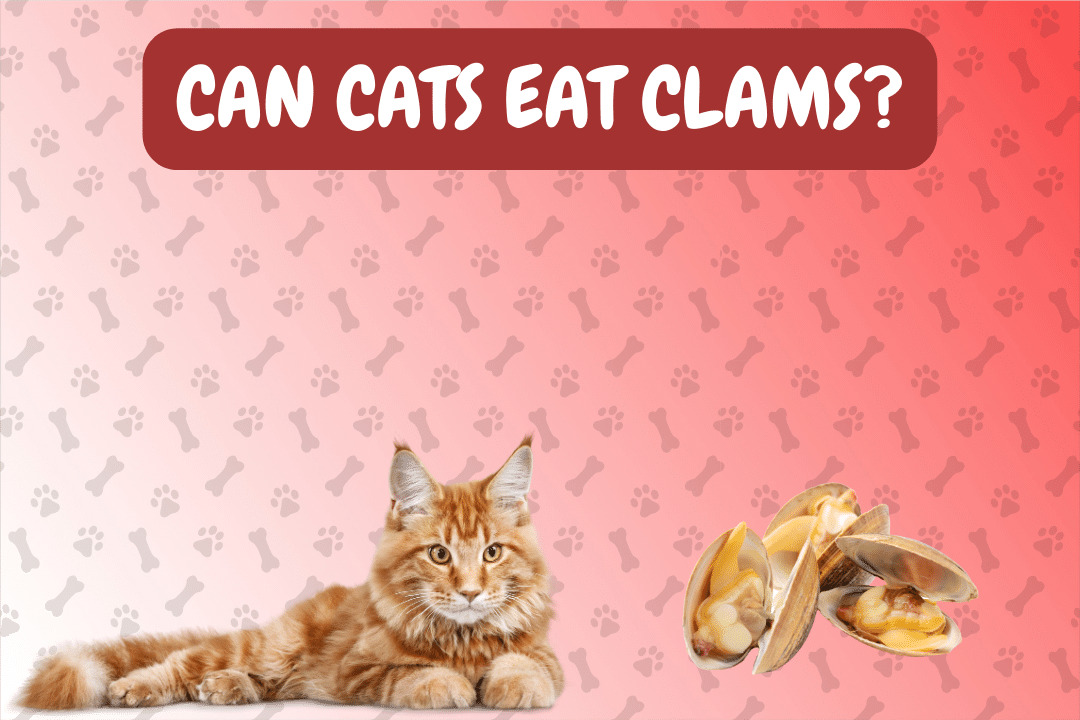No, cats can’t eat clams, because they pose potential health risks and may not provide essential nutrients for feline diets.
Table of Contents
Introduction
Cats are known for their selective dietary habits, and as responsible pet owners, it’s vital to ensure that the foods we offer them are safe and suitable for their unique nutritional needs. In this article, we will explore can cats eat clams as an appropriate addition to a their diet, discussing their nutritional value, potential risks, safe serving guidelines, and providing expert insights to help you make informed decisions about your feline friend’s diet.
Nutritional Value
Clams are shellfish that contain various nutrients beneficial to humans, such as protein, vitamins, and minerals. However, these nutrients do not necessarily align with a cat’s dietary requirements. Cats are obligate carnivores, which means their primary source of nutrition should come from animal-based protein. While clams provide protein, they may lack other essential nutrients required for feline health.
Potential Risks
Feeding clams to cats can pose several risks. Clams may contain harmful bacteria or parasites that can cause gastrointestinal issues in cats. Additionally, some cats may have allergies or sensitivities to seafood, which can lead to adverse reactions like vomiting or diarrhea. The shells of clams can also be a choking hazard.
How to Serve Safely
If you still wish to offer clams to your cat, it’s essential to do so in moderation and only as an occasional treat. Ensure the clams are cooked thoroughly to eliminate any potential bacteria or parasites. Remove the shells and chop the meat into small, manageable pieces to reduce the risk of choking.
Serving Suggestions
While clams can be served to cats, it’s generally advisable to stick to cat-specific commercial diets that are specially formulated to meet their nutritional needs. These diets are designed to provide all the essential nutrients in the correct proportions to support your cat’s health.
Special Considerations
Consider any allergies or sensitivities your cat may have before introducing new foods into their diet. Some cats may be more prone to seafood allergies, so monitor their reaction closely when offering clams or any other seafood.
Expert Opinion
Veterinarians and feline nutrition experts typically discourage feeding clams or other seafood to cats as a primary dietary component. Cats have specific dietary requirements, and it’s best to meet those needs with high-quality commercial cat food.
Conclusion
In conclusion, cats can’t eat clams, because they are not a recommended food for cats due to the potential health risks they pose and the likelihood that they may not provide the necessary nutrients for feline diets. To ensure your cat’s health and well-being, it’s best to stick to commercially available cat food that meets their specific nutritional requirements.
FAQ
Q1: Can I give my cat a small piece of clam as a rare treat?
A1: While it is possible to offer a small, cooked piece of clam as an occasional treat, it’s essential to be aware of potential risks and allergies. Monitor your cat’s reaction closely and consult with your veterinarian if you have concerns.
Q2: Are there other seafood options that are safer for cats?
A2: Some cats can tolerate small amounts of certain seafood like cooked, plain fish. However, it’s essential to introduce new foods cautiously and monitor for any adverse reactions.
Q3: Can cats eat clam chowder or dishes with clam-based sauces?
A3: Dishes with clam-based sauces or ingredients like clam chowder may contain additional seasonings or ingredients that are not suitable for cats. It’s best to avoid such dishes and stick to foods specifically formulated for feline diets.
Q4: Can kittens eat clams?
A4: Kittens have sensitive digestive systems, and it’s best to stick to a balanced kitten-specific cat food to ensure they receive the nutrients necessary for their growth and development. Avoid introducing clams or other non-standard foods to kittens.
Q5: Can clams help improve my cat’s coat or overall health?
A5: Clams are not a necessary or recommended dietary component for cats. A high-quality commercial cat food that meets all their nutritional needs is the best way to support their overall health, including coat quality.
Q6: What should I do if my cat accidentally ingests clams or shows signs of an adverse reaction?
A6: If your cat ingests clams and experiences vomiting, diarrhea, or any other concerning symptoms, contact your veterinarian immediately for guidance and evaluation.
Q7: Can cats develop allergies to clams over time?
A7: Cats can develop allergies or sensitivities to certain foods, including seafood like clams, over time. If you suspect your cat may have a food allergy, consult with your veterinarian for appropriate testing and dietary adjustments.
Q8: Can cats eat canned clam meat from pet stores?
A8: Canned clam meat designed for pets may be a safer option than fresh clams, but it’s still advisable to consult with your veterinarian before incorporating it into your cat’s diet. Ensure it contains no additional seasonings or ingredients that could be harmful to cats.
Q9: Can cats eat clam shells?
A9: No, cats should not eat clam shells. Clam shells can be a choking hazard and are not digestible for cats.
Q10: Can clams be beneficial for older cats with dental issues?
A10: While clams may be easier for some older cats with dental issues to chew, there are other dental-friendly cat treats available specifically designed to promote dental health. Consult with your veterinarian for suitable options for your cat’s dental care.
For more Cats food information, read our blog.
Hello! I’m Max Walley, a pet enthusiast who knows a lot about what our animal buddies can munch on and what’s a no-no. With ‘canpeteat.it,’ I’m here to help pet owners make smart food choices. Come with me as we dive into the world of pet nutrition, discovering what keeps our furry pals joyful and in tip-top shape. Let’s explore this adventure together!


